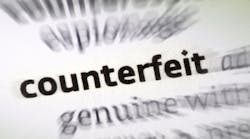Download this article in PDF format.
It’s been 12 years since the Office of the United States Trade Representative (USTR) published its first “Notorious Markets List” to help increase public awareness of counterfeiting and piracy. The USTR also wanted to help market operators and governments prioritize intellectual property (IP) enforcement efforts that protect American businesses and their workers.
While the USTR report isn’t an exhaustive list of all markets that are involved with counterfeiting and piracy, it does paint a picture of a trading community that’s rife with fake products that are illegally copied, produced and/or sold to the public.
“The widespread trade in counterfeit and pirated goods harms the economic security of American workers and undermines our work to craft equitable and inclusive trade policy,” said USTR Ambassador Katherine Tai in a press release. “The Notorious Markets List is an important tool that urges the private sector and our trading partners to take action against these harmful practices.”
One CBP Division had a Record Year
The counterfeiting threat continues to escalate. In Indianapolis alone, for example, U.S. Customs and Border Protection (CBP) officers saw a 55% increase in counterfeit goods during the last fiscal year (which runs from Oct. 1, 2021, to Sept 30, 2022).
This amounted to a record number of fraudulent counterfeits—a total of 7,901—seized during that 12-month period. The manufacturer’s suggested retail price (MSRP) on those goods would have amounted to more than $115 million, had they been legitimate products. According to the CBP, the agency’s Indianapolis officers intercepted over 34% more counterfeits shipments compared to FY 2021. The vast majority of those counterfeits came from overseas locations.
The Epicenter of Counterfeit Electronics Trade
The 2022 Notorious Markets List identifies 39 online markets and 33 physical markets that reportedly engage in or facilitate substantial trademark counterfeiting or copyright piracy. The USTR singles out the WeChat e-commerce ecosystem as one of the largest platforms for counterfeit goods in China, but other listed markets in the country include online markets Aliexpress, Baidu Wangpan, DHGate, Pinduoduo and Taobao, as well as seven physical markets located within China that increasingly use brick-and-mortar storefronts to support online sales of counterfeits.
For example, the report identifies Huaqiangbei Electronics Malls—which includes the Yuan Wang, Huaqiangbei Digital World, Long Sheng Communications Market and Man Har Digital Plaza Malls in Shenzhen, Guangdong Province—as the “epicenter of the counterfeit electronics trade.”
Comprising about 20 malls, Huaqiangbei Electronics Malls serves as a central distribution hub for counterfeit electronic devices and components, including counterfeit computer chips, wiring, capacitors and LEDs used by manufacturers of counterfeit consumer electronic devices in China and around the world.
“Vendors at these malls also offer counterfeit smartphones, tablets, wireless earbuds and other peripherals,” the USTR reports. “[Intellectual property] right holders report that, with declining foot traffic, many counterfeit sales have moved online. Increasingly, brick-and-mortar stores instead serve as contact points that provide product sample testing, call centers and customer fulfillment services for online sales via local and international parcel delivery services.”
Maintaining Vigilance
Commercial-scale copyright piracy and trademark counterfeiting cause significant financial losses for U.S. IP right holders and legitimate businesses, undermine critical U.S. comparative advantages in innovation and creativity to the detriment of American workers, and pose significant risks to consumer health and safety, according to the USTR.
The Notorious Markets List highlights prominent and illustrative examples of online and physical markets that reportedly engage in, facilitate, turn a blind eye to or benefit from substantial piracy or counterfeiting, the USTR adds. “A goal of the NML is to motivate appropriate action by the private sector and governments to reduce piracy and counterfeiting.”
This year’s list also includes several “previously identified” markets where owners, operators and governments failed to address the stated concerns. On a positive note, the USTR says there have been “notable efforts to address the widespread availability of counterfeit and pirated goods in some online and physical markets” over the last year.
“The United States commends these efforts and encourages governments, right holders, service providers and the owners and operators of these and other markets,” it adds, “including those newly identified in the 2022 Notorious Markets List, to engage in sustained and meaningful efforts to combat piracy and counterfeiting.”









